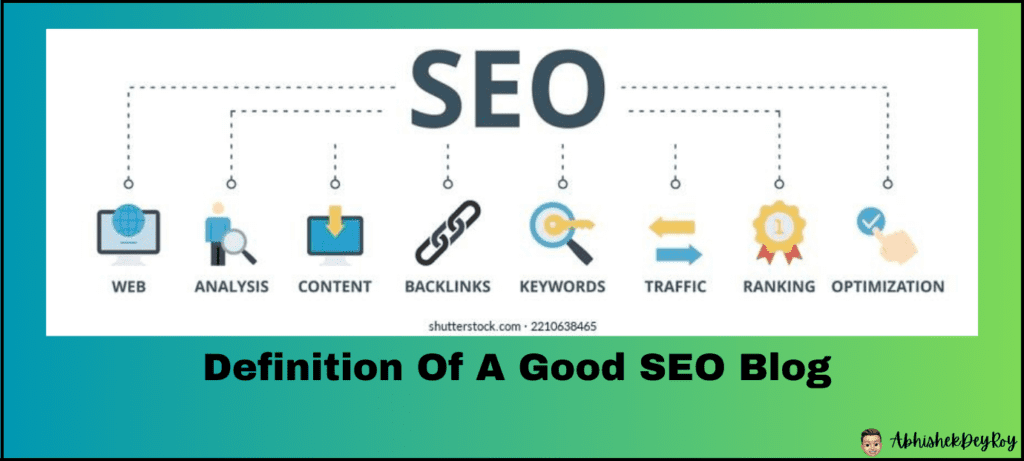Whenever we talk about SEO, two things first come to our mind, they are Off Page SEO and On Page SEO, but before performing these two SEOs, we also have to do Technical SEO.
It is very important to do Technical SEO to make any blog and website post Organic Traffic and Rank because with its help we can rank our website pages on top in search engine very quickly. To take full advantage of SEO, it is important to make sure that along with Off Page and On Page SEO, the technical SEO of your site is also very good so that your website ranks on the top position in Google and other Search Engines. Get it
What is Technical SEO?
Technical SEO refers to the optimization of a website’s technical aspects to improve its visibility and ranking on search engines. It involves making changes to the website’s infrastructure, code, and server settings to enhance its performance, crawlability, and indexability by search engine bots.
Eliminate Duplicate Content Issues
You won’t get a formal penalty from creating and posting duplicate blog posts on multiple pages on the same site. But you should still get rid of duplicate content issues for several reasons.
Web crawlers won’t know which version of the content is the original one. This means they will not be able to determine what page to show in SERPs. And that can result in the low rank of your site.
You can use specific tools to key out on-site duplicate content issues. Some errors only require you to rewrite the meta so it will appear original. Entire pages of duplicate content may require a 301 redirect. The 301 Redirect will send human visitors and search engine crawlers to a different URL than the one they chose from the results.
How to Implement Technical SEO?
1. Speed Up Your Website
Website speed is a crucial factor in both user experience and search engine rankings. To improve website speed, you can compress images, minify CSS and JavaScript files, enable browser caching, and use a content delivery network (CDN).

This has a very bad effect on your ranking, so the speed of your website should always be kept good, you can speed up the speed of the website by using the tips given below-
- Use a Lightweight fast theme.
- Use Fewer plugins.
- Optimize Your Image Size.
- Use Cache plugins.
- For Awesome Website Speed Use Better Hosting.
2. Use Schema Markup
Schema markup is a structured data vocabulary that helps search engines understand the content on your website better. By implementing schema markup, you can provide additional information about your content, such as reviews, ratings, and product details, which can enhance your search engine visibility.
3. Make Mobile-Friendly Website

With the increasing use of mobile devices, having a mobile-friendly website is essential. Ensure that your website is responsive and optimized for mobile devices. Use mobile-friendly design principles, such as using a responsive layout, optimizing images for mobile, and providing a seamless user experience across different screen sizes.
4. URL Structure
Optimize your website’s URL structure to make it search engine-friendly. Use descriptive and relevant keywords in your URLs, separate words with hyphens, and keep them concise. A clean and organized URL structure can improve the crawlability and understandability of your website by search engines.
5. Optimize Your robots.txt and 404 Pages
Customize your robots.txt file to control which pages search engine bots can crawl and index. Ensure that it is properly configured to avoid blocking important pages. Additionally, create a custom 404 error page that provides a user-friendly experience and helps users navigate back to relevant content.
6. Use SSL Certificate
Implementing an SSL certificate on your website is not only essential for security but also for SEO. Having an SSL certificate ensures that your website is served over HTTPS, which is a ranking factor for search engines. It also helps build trust with your website visitors by providing a secure browsing experience.
7. Connect to Google Search Console and Submit XML Sitemap
Google Search Console is a valuable tool for monitoring and optimizing your website’s performance on Google search results. Connect your website to Google Search Console and submit an XML sitemap to help search engines discover and index your web pages more efficiently.
8. AMP (Accelerated Mobile Pages)
Implement Accelerated Mobile Pages (AMP) to improve the loading speed and performance of your mobile web pages. AMP is a framework that allows you to create lightweight and fast-loading versions of your web pages specifically designed for mobile devices, which can improve user experience and search engine rankings.
9. Remove Bad Backlinks

Regularly monitor your website’s backlink profile and identify any low-quality or spammy backlinks. Disavow these bad backlinks using the Google Disavow Tool to prevent them from negatively impacting your website’s SEO performance.
How Is Technical SEO Different from Other Types of SEO?
There are three kinds of Search Engine Optimizations (SEOs). These are on-page SEO, off-page SEO, and technical SEO. On-page SEO has to do with the optimization of website content and pages. Meanwhile, off-page SEO refers to the establishment of relationships and links between websites.
Since technical SEO is internal, it is considered a part of on-page SEO. It doesn’t function to render website exposure through external channels.
Let’s quickly cover what each SEO type means before you begin creating a healthy marketing environment.
On-page SEO
On-page SEO refers to elements that are on your site’s leading end to better your search engine rankings. As a website owner, you have control over on-page SEO as all components are on your website. On-page SEO includes internal linking, URL naming, and content formatting. It also covers meta descriptions, keyword usage, and image optimization (image alt text).
Here are a few tips to improve your on-page SEO:
- Write quality content
- Publish consistently
- Use proper URL structures
- Optimize title tags and meta descriptions
Off-Page SEO
In off-page SEO, you have to rely on third parties. You will be using techniques outside of your website to improve your search rankings.
The most common strategy in off-page SEO is quality backlink profiling. If a specific page outside your site links back to your web page, your website can generate more visitors. If you have more quality links that go back to your page, your site can rank higher.
The quality of each backlink is important. Your ranking depends on the popularity of the website that links to your page.
Here are a few tips to improve your off-page SEO:
- Get links through guest posting
- Leverage on social media marketing
- Submit SEO-friendly press releases
- Create share-worthy infographics
FAQ
How to Learn Technical SEO?
To learn technical SEO, you can start by reading reputable blogs, attending SEO conferences and webinars, and taking online courses specifically focused on technical SEO. It is also important to stay updated with the latest industry trends and algorithm updates.
How Many Types of SEO?
There are three main types of SEO: technical SEO, on-page SEO, and off-page SEO. Technical SEO focuses on optimizing the technical aspects of a website, on-page SEO involves optimizing individual web pages, and off-page SEO focuses on building backlinks and online reputation.
What is technical SEO vs on-page SEO?
Technical SEO vs On-Page SEO Differences
Technical SEO involves making sure that your website’s code is clean and effective, while on-page SEO has to do with the way that your website is formatted. You could say that technical SEO is focused on performance, while on-page SEO is focused on content.
Why do we need technical SEO?
Technical SEO holds immense importance because it directly impacts how your website performs in Google’s search results. If search engines can’t easily access and understand your web pages, no matter how valuable your content is, those pages won’t appear or rank in search results.
How is technical SEO done?
Fundamentally, technical SEO is creating sites that search engines can crawl, read, and understand. Google does three things: it crawls pages, indexes them, and ranks them. Good technical SEO ensures that all three steps are done accurately. You can’t rank high without being crawled and indexed well.
What Type of SEO to Prioritize
All in all, every type of SEO is significant. For a digital marketing strategy to work, you have to make SEO your foundation. If you want to create the biggest improvement in rankings, you have to cover all three types of SEO for your website.
We suggest that you begin with on-page SEO. You can then proceed to technical SEO. And then you can fine-tune your website ranking with off-page SEO techniques.
If you start applying the best SEO strategies today, organic search can become fundamental in your business’s growth.
Conclusion – What is Technical SEO
Technical SEO plays a crucial role in improving a website’s visibility and ranking on search engines. By implementing the recommended technical SEO practices, such as optimizing website speed, using schema markup, and creating a mobile-friendly website, you can enhance your website’s performance and increase its chances of ranking higher in search engine results.
Also Read:







1 thought on “What is Technical SEO and How to Implement it Free in 2024”